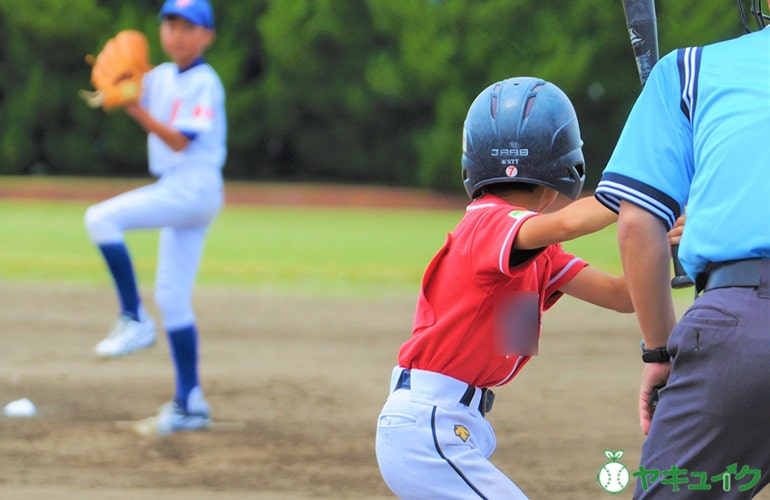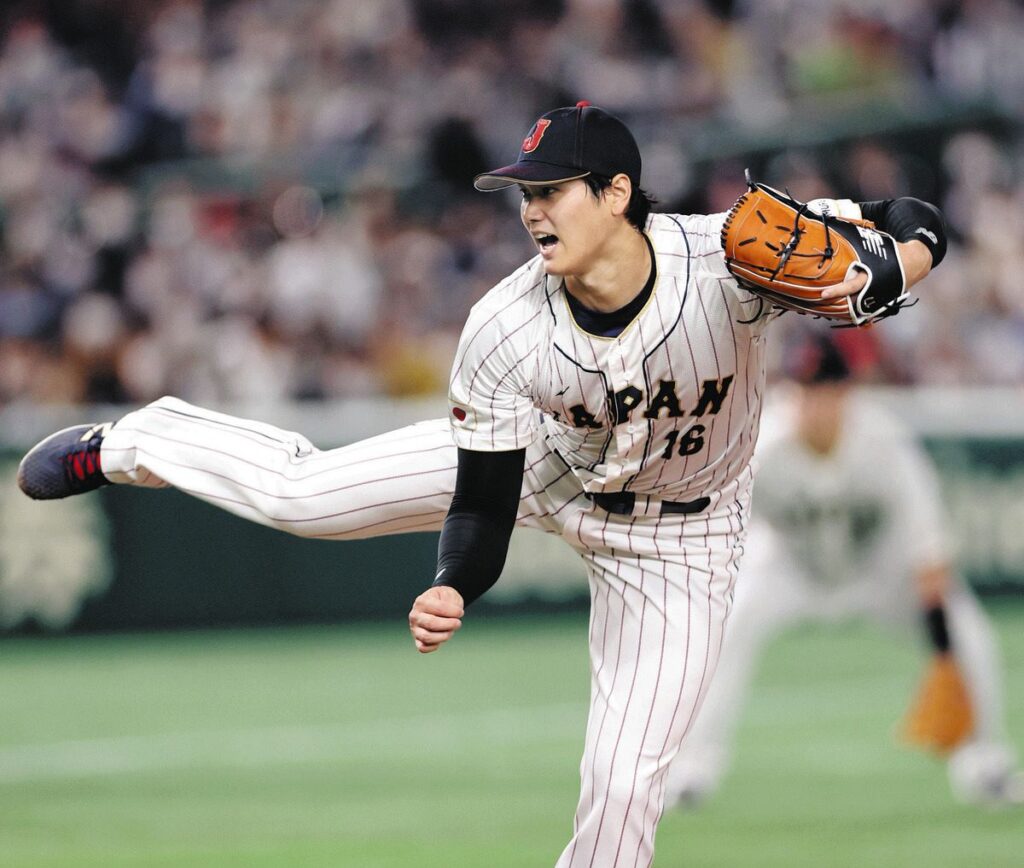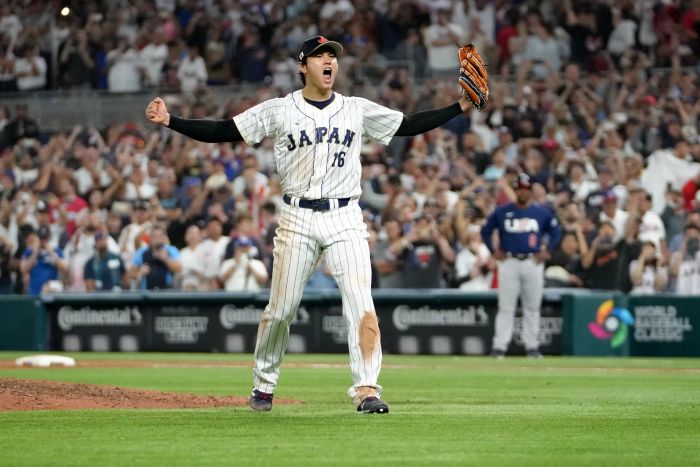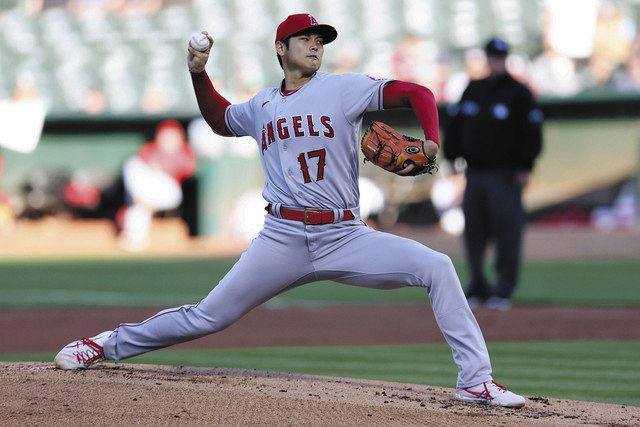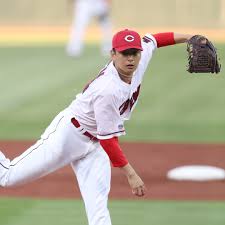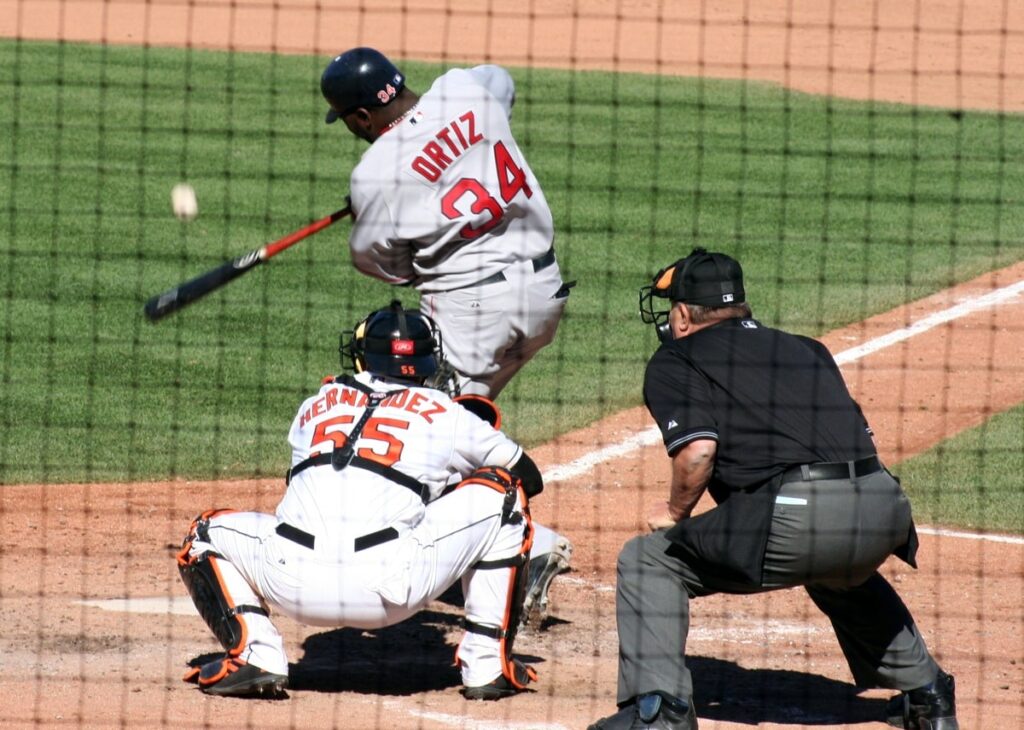
Slugging percentage is an important indicator for evaluating a player’s batting ability in baseball.
This metric is calculated by dividing the total bases (singles, doubles, triples, home runs, etc.) by the number of at-bats, and shows how many bases a player has gained.
Players with a high slugging percentage have the power to dramatically change the flow of a game and are essential for increasing a team’s scoring ability.
In this article, we will explain in detail the basics of slugging percentage, its importance, how to improve it technically, player characteristics, its relationship to other batting indicators, historical changes, and the differences between slugging percentage in professional baseball and amateur baseball.
Based on the latest information, let’s explore how slugging percentage is calculated and what tactical significance it has.
目次
- 1 Basic understanding of slugging percentage
- 2 The Importance of Slugging Percentage
- 3 Techniques to improve slugging percentage
- 4 Characteristics of players with high slugging percentages
- 5 Relationship between slugging percentage and other batting indicators
- 6 Changes in slugging percentage in baseball history
- 7 Differences in slugging percentage between professional and amateur baseball
Basic understanding of slugging percentage
Slugging percentage is one of the indicators of a batter’s batting ability in baseball.
This metric represents how many bases a batter gets and is used to evaluate a player’s power and hitting quality.
Below we take a closer look at the definition of slugging percentage, how to calculate it, and its history and origins.
Definition of slugging percentage and how to calculate it
Slugging percentage is the percentage that indicates how many bases a batter gains per at bat and is calculated by the following formula:
Slugging percentage = (singles + 2x doubles + 3x triples + 4x home runs) / number of hits
The number of bases hit in each at-bat is as follows:
- Single hit: 1st base hit
- Double hit: 2nd base hit
- Triple hit: 3rd base hit
- Home run: Fourth base hit
This calculation evaluates the quality of a batter’s batting by dividing the total number of bases he has achieved by the number of at-bats he has played. For example, if a batter has 20 singles, 10 doubles, 5 triples, and 5 home runs in 100 at-bats, his slugging percentage is calculated as follows:
Slugging percentage = (20 + 2×10 + 3×5 + 4×5) / 100 = (20 + 20 + 15 + 20) / 100 = 75 / 100 = 0.750
In this example, the hitter’s slugging percentage is 0.750. A higher slugging percentage indicates a hitter’s ability to hit the ball for power.
History and origins of slugging percentage
The concept of slugging percentage has evolved alongside advances in baseball tactics and statistical analysis.
In the early days of baseball, batting average (the percentage of times a batter hits a ball) was used as the main evaluation indicator, but there was an issue that batting average alone could not adequately evaluate the quality of a player’s batting.
In particular, there were limitations to the evaluation of power hitters and batters aiming for long hits.
Slugging percentage was introduced as a complementary indicator to batting average and has evolved as a means to more accurately evaluate a hitter’s power and long-range ability.
Slugging percentage has become widely accepted as an indicator for evaluating the overall quality of a batter’s batting by showing how many bases a batter is getting.
In the early 20th century, the concept of slugging percentage became widespread in Major League Baseball in the United States and began to play an important role in evaluating players and planning tactics.
The importance of slugging percentage was especially recognized during the rise of legendary power hitters such as Babe Ruth and Lou Gehrig.
Even in modern baseball, slugging percentage is widely used as one of the basic indicators for evaluating a player’s batting ability.
In particular, when combined with OPS (the sum of on-base percentage and slugging percentage) to evaluate a batter’s overall batting ability, it is possible to more accurately evaluate a player’s value and performance.
Slugging percentage has continued to evolve throughout history as an indicator of a batter’s batting ability, and it still plays an important role in modern baseball.
Now let’s take a closer look at the importance of slugging percentage.
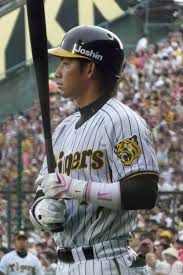
The Importance of Slugging Percentage
Slugging percentage is one of the important batting indicators in baseball and has a significant impact on team strategies and player evaluations.
Here we take a closer look at how slugging percentage affects team strategy and the role it plays in player evaluation.
The impact of slugging percentage on team strategy
-
Improved scoring :
- Players with a high slugging percentage have the power to advance significantly with one hit during a game. Home runs, doubles, and triples allow players to gain multiple bases at once, greatly increasing scoring opportunities. This improves scoring ability and can instantly change the flow of the game.
-
Batting order composition :
- By placing players with high slugging percentages in the center of the batting lineup, you can put pressure on the opposing pitcher. In particular, by placing them in the cleanup positions (3rd, 4th, and 5th batters), you can expect them to hit long balls in scoring position. This will ensure that you take advantage of your scoring opportunities.
-
Pressure on the Opposing Team :
- A team with many players with high slugging percentages can force the opposing team to always be on guard against long hits. This forces the opposing pitcher to pitch more cautiously, increasing the chances of inducing walks or soft pitches. This further increases the chances of scoring.
-
Diversify your tactics :
- Tactics that take slugging percentage into consideration are becoming more diverse. For example, by deploying tactics that assume players with high slugging percentages, such as bunt tactics to advance runners to bases and sacrifice flies, you can increase the offensive power of the entire team.
The role of slugging percentage in player evaluation
-
A batter’s overall hitting ability rating :
- Slugging percentage is an important indicator for comprehensively evaluating a batter’s batting ability. It reflects not only singles but also slugging power such as doubles, triples, and home runs, so it can measure a batter’s true batting ability. This makes it possible to accurately evaluate the quality of a player’s batting.
-
Identifying a Power Hitter :
- Players with high slugging percentages often have the qualities of a power hitter. This allows teams to identify power hitters and build batting lineups and tactics around them. Also, scouts and coaches can identify the characteristics of power hitters and provide appropriate guidance and training.
-
Determining a player’s market value :
- Slugging percentage is an important indicator for determining a player’s market value. In particular, players with a high slugging percentage tend to be valued highly during free agency and trades. This influences the determination of a player’s contract terms and annual salary.
-
Analyze player performance and identify areas for improvement :
- By analyzing slugging percentage, you can evaluate a player’s performance in detail and identify areas for improvement. For example, if a player has a low slugging percentage, you can analyze the cause and improve their performance by correcting their batting form or reviewing their training method.
-
Balanced evaluation of batting performance :
- Slugging percentage, when combined with on-base percentage, allows for a more balanced evaluation of a player’s batting performance. By using OPS (on-base percentage + slugging percentage), you can comprehensively judge how often a player gets on base and how much slugging power he has.
Slugging percentage plays an important role in team strategy and player evaluation.
By utilizing this indicator, it is possible to improve a team’s scoring ability and properly evaluate players.
Next, let’s take a closer look at techniques to improve your slugging percentage.

Techniques to improve slugging percentage
In order to improve your slugging percentage, an effective batting form and an appropriate training menu are essential.
Below, we will explain in detail the technical points for improving your slugging percentage and effective practice methods.
Effective batting form
-
Balanced Stance :
- The foundation of effective batting form begins with a balanced stance: your feet should be shoulder-width apart and your knees slightly bent to provide a stable stance. This position provides the foundation for your swing and allows for a powerful swing.
-
Lower body utilization :
- In order to hit a long ball, it is important to effectively utilize the power of your lower body. In particular, the stepping foot and the rotation of your hips play a role in transmitting power to the swing. When batting, you push hard against the ground with your stepping foot and rotate your hips to add momentum to your swing.
-
Smooth weight transfer :
- A smooth weight transfer is essential for an effective swing. When the pitcher releases the ball, you transfer your weight smoothly from your back foot to your front foot to transfer power to the bat. This transfer of weight helps maximize the energy you need to hit a long ball.
-
Impact timing :
- The timing of impact is important for hitting a long hit. In order to exert maximum power at the moment the bat hits the ball, it is necessary to point the head of the bat firmly at the ball and hit the center of the ball. This will give the ball sufficient backspin to increase the distance it travels.
-
The Importance of Follow-Through :
- To achieve a powerful swing, the follow-through is also important. After hitting the ball, swing the bat all the way to the end to maintain momentum in the swing and increase the distance of the ball. When following through, make sure your whole body naturally follows the movement of the bat.
-
strength training :
- In order to improve your hitting power, it is important to strengthen the muscles of your upper and lower body. In particular, by focusing on training your chest, back, abdominal and leg muscles, you can gain the power you need for your swing. Specifically, basic weight training such as bench press, squats and deadlifts are effective.
-
Tee batting :
- Tee batting is a basic practice method for improving hitting power while checking your batting form. By hitting a ball placed on a tee, you can adjust the trajectory of your swing and the timing of your impact to acquire an effective swing. In tee batting, you can develop flexible hitting power by hitting the ball from various heights and positions.
-
Free Batting :
- Free batting is batting practice that is close to a real game. By hitting balls thrown by a pitcher, you can train your hitting ability against realistic pitching. In free batting, you can develop the ability to respond to various situations such as fastballs, curveballs, inside and outside corners.
-
Bat Speed Training :
- Training to improve bat speed is also important. The faster the swing speed, the more power you can give to the ball, and the higher the chances of hitting a long ball. Specific training methods include high-speed swing practice using a light bat and strength training using a heavy bat.
-
Video Analysis :
- By filming and analyzing your swing, you can find areas to improve your form. Review the video with your coach and closely check the swing trajectory and timing to improve your technique. By regularly conducting video analysis, you can steadily improve your batting technique.
-
Mental training :
- Mental strength is also important for hitting long balls. We incorporate mental training to overcome the pressure and tension during the game and to improve concentration. Relaxation techniques, visualization, and mental exercises to increase self-esteem are effective.
By practicing these techniques and training you can improve your slugging percentage.
By adopting an effective batting form and appropriate training menu, players will be able to improve their power hitting and enhance their performance in games.
Next, let’s take a closer look at the characteristics of players with high slugging percentages.

Characteristics of players with high slugging percentages
High hitting players have a few things in common.
Here we will explain in detail the differences between power hitters and contact hitters, as well as the physical conditions that support slugging percentage.
The difference between a power hitter and a contact hitter
Power hitter :
- A power hitter is a batter who aims for home runs and long hits. They have the ability to hit the ball far with a powerful swing. The main characteristics of a power hitter are as follows:
- Large Swing Arc : A power hitter has a large swing arc, which allows them to transfer the most power to the ball, which helps the ball travel further.
- Bat Speed : They have very fast bat speed. A fast swing results in a strong impact on the ball and increases the distance it can travel.
- Weight transfer and hip rotation : Power hitters focus their force on the ball by transferring their weight firmly from back to front during the swing and rotating their hips strongly.
- Launch Angle : A high launch angle makes it easier for power hitters to hit fly balls, increasing their chances of hitting a home run, double, or triple.
Contact Hitter :
- On the other hand, a contact hitter is a batter who has the ability to hit the ball reliably. They produce a lot of hits with precision batting, but they can also hit long balls. The main characteristics of a contact hitter are as follows:
- Short Swing : A contact hitter can make more contact with the ball by having a short, quick swing, which can lead to a higher batting average.
- Batting Eye : They have excellent batting eye and the ability to distinguish between balls and strikes, which allows them to draw walks and increase their on-base percentage.
- Bat control : Contact hitters have excellent bat control and can reliably hit the ball in the direction they want to hit it in. This makes it easier to produce a lot of hits.
- Flexible approach : They have the flexibility to adjust their swing depending on the situation and can use their power to hit for extra bases when needed.
The physical conditions that support slugging percentage
-
Upper Body Strength :
- In order to hit a long ball, it is important to have strong upper body muscles. In particular, if the chest, back, and shoulder muscles are strong, it will be easier to transmit power to the bat and you will be able to hit the ball farther. To train these muscles, training such as bench press, lat pulldown, and dumbbell press are effective.
-
Core strength :
- Core strength also has a big impact on slugging percentage. A strong core makes it easier to maintain a stable posture during swings, enabling a powerful swing. It is important to strengthen your core through exercises such as planks, Russian twists, and medicine ball slams.
-
Lower Body Strength :
- Lower body strength is also essential for long hits. In particular, if you have strong leg and buttock muscles, you can push the ground hard during your swing and transfer the power of your entire body to the bat. It is recommended that you train your lower body with exercises such as squats, deadlifts, and lunges.
-
Flexibility :
- In order to hit a long shot, you need not only muscle strength but also flexibility. Flexibility increases the range of motion of your swing and allows you to transmit power more efficiently. It is important to increase muscle flexibility by incorporating stretching, yoga, dynamic stretching, etc.
-
Endurance :
- To hit a long ball, you also need the stamina to maintain a stable performance throughout a game. With stamina, you can maintain a powerful swing even when fatigue accumulates. By incorporating aerobic exercise and interval training, you can improve your stamina.
Players with high slugging percentages meet these physical requirements and practice effective batting form and proper training.
Next, let’s take a closer look at the relationship between slugging percentage and other batting metrics.

Relationship between slugging percentage and other batting indicators
Slugging percentage is one of the important indicators for evaluating a player’s batting power, but by combining it with other batting indicators, a more comprehensive evaluation of a player’s performance can be obtained.
Here we will explain in detail the correlation between slugging percentage and on-base percentage, as well as the importance of OPS (On-base Plus Slugging).
Correlation with on-base percentage
-
On-base percentage definition :
- On-base percentage (OBP) is an indicator of the percentage of times a batter reaches base. On-base percentage is calculated by dividing the number of times a batter reaches base due to a hit, walk, hit by pitch, etc. by the number of at-bats. The formula for calculating on-base percentage is as follows:
- On-base percentage = (hits + walks + hit by pitch) / (at bats + walks + hit by pitch + sacrifice flies)
-
Relationship between on-base percentage and slugging percentage :
- Both on-base percentage and slugging percentage are important indicators for evaluating a batter’s batting ability, and by combining them, you can grasp a player’s overall batting ability. A batter with a high on-base percentage can get on base on many occasions during a game, helping to improve the team’s scoring ability.
- On the other hand, a batter with a high slugging percentage not only gets on base, but also hits a long ball to gain more bases at once and advance runners into scoring position. Therefore, a batter with both a high on-base percentage and a high slugging percentage is very valuable.
-
Correlation analysis :
- By analyzing the correlation between on-base percentage and slugging percentage, we can understand a player’s batting style and strengths. For example, a player who has both a high on-base percentage and a high slugging percentage not only has the ability to get on base consistently, but also has the ability to hit powerful balls.
- A player with a high on-base percentage and a low slugging percentage may have the traits of a contact hitter, while a player with a high slugging percentage and a low on-base percentage may have the traits of a power hitter.
The Importance of OPS (On-base Plus Slugging)
-
Definition of OPS :
- OPS (On-base Plus Slugging) is an index that combines on-base percentage (OBP) and slugging percentage (SLG) to evaluate a batter’s overall batting ability. OPS allows you to get an overall picture of a player’s batting ability by taking into account both the player’s on-base ability and slugging ability at the same time. The formula is as follows:
- OPS = On-base percentage + Slugging percentage
-
OPS criteria :
- OPS is a powerful metric for evaluating a hitter’s overall hitting ability. Generally, a player with an OPS of .800 or higher is considered a very good hitter, and a player with an OPS of .900 or higher is considered an elite hitter. Players with an OPS of over 1.000 are the best hitters in the league and are very rare.
-
Importance of OPS :
- OPS is a good way to evaluate a player’s balanced hitting ability because it takes into account both on-base percentage and slugging percentage. Players with high on-base percentage and slugging percentage have the ability to not only get on base but also to advance runners with long hits, which contributes greatly to their team’s scoring ability.
- OPS is also an important indicator for evaluating the value of a player. In particular, players with a high OPS are often highly valued in the free agent market and in trade negotiations, and it is also an important indicator for strengthening a team’s strength.
-
Strategic Applications :
- By utilizing OPS, teams can strategically consider how to organize their batting lineup and how to use their players. For example, by placing players with high OPS at the top of the batting order, it is possible to maximize scoring opportunities. In addition, by analyzing players’ performance based on OPS, it is possible to improve weaknesses and review training menus.
Slugging percentage, on-base percentage, and OPS are important indicators for comprehensively evaluating a player’s batting ability.
By combining these, you can understand players’ batting styles and strengths and use this information in team strategies and player evaluations.
Next, let’s take a closer look at the evolution of slugging percentage throughout baseball history.
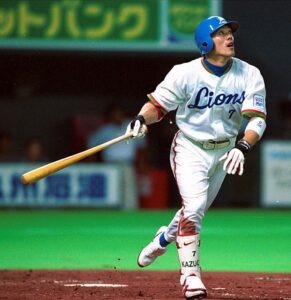
Changes in slugging percentage in baseball history
Slugging percentage has evolved over time as an important indicator of a baseball player’s batting ability.
Here we will take a closer look at the players with the highest slugging percentages of all time, as well as the changes in slugging percentages over the years and the background to those changes.
All-time leading slugging player
-
Babe Ruth :
- Babe Ruth is one of the most famous power hitters in baseball history, and his slugging percentage is astounding. Ruth had a career slugging percentage of .690, and his hitting power is legendary. During his time in the 1920s, Ruth produced a lot of home runs, and his presence was the catalyst for spreading awareness of the importance of slugging percentage.
-
Barry Bonds :
- Barry Bonds is also known for his high slugging percentage. Bonds’ career slugging percentage is .607, and his power and eye are unparalleled. In particular, in 2001, he hit 73 home runs in a season and his slugging percentage that year reached an astounding .863.
-
Ted Williams :
- Ted Williams is known as a batting genius, with a career slugging percentage of .634. Williams was not just a power hitter, but a player with both a high batting average and slugging power. His batting theory and techniques still influence many players today.
-
Lou Gehrig :
- Lou Gehrig was a great power hitter who played for the New York Yankees. His career slugging percentage was .632, and his consistency contributed greatly to the team’s success. Gehrig’s consistent performance makes him one of the best players in baseball history.
Changes in slugging percentage over time and the background
-
Dead Ball Era (Early 1900s) :
- The early 1900s, known as the Dead Ball Era, was a time when slugging percentages were relatively low. During this time, pitchers had the advantage, and batters generally tried to score runs by using small tricks and bunting. The ball itself was hard, making it difficult to hit it far.
-
Live ball era (1920s onwards) :
- In the 1920s, with the emergence of Babe Ruth, slugging percentages improved dramatically. This period was called the live ball era, and the ball flew more easily, leading to an increase in home runs. Due to Ruth’s influence, power hitting became more important, and players with high slugging percentages came into the spotlight.
-
1940s-1950s :
- This was the post-World War II recovery period, and baseball’s popularity was on the rise again. Stars like Ted Williams and Joe DiMaggio flourished, and slugging percentages remained consistently high. Players adopted more scientific training and nutritional management, and hitting techniques improved.
-
1960s-1970s :
- In the 1960s and 1970s, pitchers again became dominant, especially in the “Year of the Pitcher” of 1968, when pitchers’ dominance was so pronounced that batting performance across the league declined, but in the late 1970s, slugging percentages began to rise again as hitters’ techniques improved.
-
1990s-2000s :
- The 1990s and 2000s were known as the steroid era, and power hitters such as Barry Bonds and Mark McGwire recorded astonishing slugging percentages one after another. During this period, the number of home runs increased sharply and slugging percentages also increased significantly. However, the steroid problem came to light, and its effects became a topic of debate.
-
Modern (2010s and after) :
- Modern baseball has taken a more scientific approach thanks to advances in data analysis and technology. Batters closely analyze their swing trajectory and ball angle and train to improve their slugging percentage. Modern players make the most of both their physical strengths and techniques to maintain a high slugging percentage.
The history of slugging percentage has changed as baseball has evolved.
Through the context of each era and the achievements of star players, you can understand how slugging percentage has evolved and become more important.
Next, let’s take a closer look at the differences in slugging percentage between professional and amateur baseball.

Differences in slugging percentage between professional and amateur baseball
Slugging percentage is used as an important hitting metric in both professional and amateur baseball, although there are differences in its importance and specific numerical values at each level.
Here we will provide some examples of slugging percentages among professional baseball players and explain in detail the importance of slugging percentage in amateur baseball.
Examples of slugging percentages of professional baseball players
-
Mike Trout :
- Mike Trout is one of the most representative players in modern major league baseball, and his slugging percentage remains at a very high level. Trout’s career slugging percentage is .581 (as of 2023), and his power hitting and on-base ability are among the best in the league. Trout combines a powerful swing with excellent batting eye, and his high slugging percentage shows the quality of his hitting.
-
Aaron Judge :
- Aaron Judge is known as a power hitter for the New York Yankees, with a slugging percentage of .583 (as of 2023). Judge has established himself as a high-slugging hitter with a high number of home runs. His physical strength and swing speed support his high slugging percentage.
-
Chris Davis :
- Chris Davis is a major league power hitter with a career slugging percentage of .515. Davis notably had a season in 2013 when he hit 53 home runs and had a slugging percentage of .634 that year. Davis’ consistent power hitting is what supports his high slugging percentage.
In professional baseball, players with a high slugging percentage make a significant contribution to their team’s scoring ability and are highly valued.
Professional players use continuous training and high technique to maintain and improve their slugging percentage.
The importance of slugging percentage in amateur baseball
-
Player Potential Rating :
- In amateur baseball, slugging percentage is an important indicator for evaluating a player’s batting power. In particular, in high school and college baseball, scouts and coaches place great importance on slugging percentage when evaluating a player’s potential. Players with a high slugging percentage are often considered to have a high possibility of being successful as professionals in the future.
-
Building a team strategy :
- Even in amateur baseball, players with high slugging percentages play an important role in a team’s strategy. By placing a powerful hitter at the core, the team can increase its scoring power and develop tactics that lead directly to victory. In particular, in tournament-style competitions, players with high slugging percentages are extremely important, as long hits often greatly change the course of the game.
-
Technical training focus :
- At the amateur level, technical instruction is given to improve slugging percentage. Players are expected to develop their power through effective batting form and strength training. Coaches analyze the players’ swing mechanics and make appropriate corrections to improve their slugging percentage.
-
Psychological factors :
- Players with a high slugging percentage can step up to the plate with confidence. In amateur baseball, psychological factors are also important, and confidence in hitting sluggers has a big impact on a player’s performance. Players who can swing with confidence are expected to perform well in games.
-
Difference in competition level :
- There is a big difference in the level of competition between professional and amateur baseball. In professional baseball, it is difficult to hit a long hit because the pitcher’s pitching speed and breaking balls are high quality. In contrast, amateur baseball is not as difficult as in professional baseball, so the slugging percentage can be relatively high. However, maintaining a high slugging percentage even at the amateur level is the result of the player’s skill and hard work.
Slugging percentage is an important indicator in both professional and amateur baseball, but its meaning and role differ.
In professional baseball, players with a high slugging percentage play a central role on their team, while in amateur baseball it is an important indicator of a player’s potential.
The technique and effort required to improve slugging percentage is important at all levels and directly translates to a player’s development and success.
